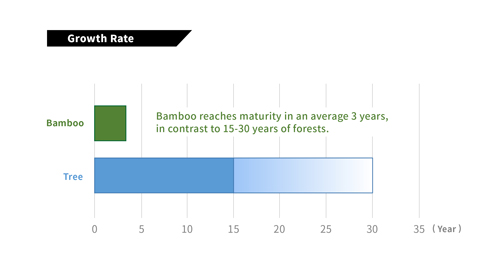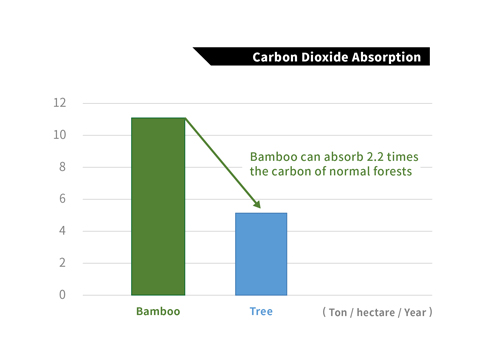
2021.05 – Bamboo Paper Sustainability
-
Why is Bamboo Sustainable? Basic Introduction:
Speaking of paper materials, trees are always the first that comes to our minds.
Trees are powerful at withdrawing carbon from the atmosphere but unfortunately, acres of rainforests are logged and disappear every minute.
Under this circumstance, bamboo is the perfect sustainable material alternative.
“Bamboo Paper Sustainability”
Why is bamboo sustainable? Bamboo grows fast and can be more efficient at sequester carbon dioxide. It’s the perfect eco-friendly alternative material.
Bamboo paper can be recycled along with paper made from trees. It also has the following characteristics of such sustainable material.
-
2 Reasons Tell You Why Bamboo is Good
After learning about why is bamboo sustainable, let’s learn about the advantages of Bamboo.
Rapidly Renewable

Bamboo is grasses, not hardwoods, and it is one of the fastest-growing grasses on earth. An average bamboo plant can grow up to 24 inches a day.
In comparison, hardwoods like oak trees take at least forty years until they can be harvested.
Generally, bamboo reaches maturity in an average of 3 years.
Due to bamboo’s deep root system, replanting is not necessary. Once the bamboo is cut, the stem is left and the bamboo can grow back in just 3-4 months.
Carbon Dioxide Absorption

Bamboo can be a tool for large-scale carbon storage. Bamboo’s ability to store carbon extends to durable products, which lock carbon in for the extent of their lifespan.
Unlike trees that are usually clear cut, the regular and selective harvesting of bamboo doesn’t kill the plant nor damage the ecosystem, and below-ground carbon in the soil and rhizome is not emitted as the bamboo forest continues to live after harvest.
It can take decades for a forest to reach a carbon sequestration level of 10,000 pounds/hectare/year. However, bamboo can actually absorb more than double the carbon of old-growth rainforests within months of being planted.
The average carbon absorption per hectare/year of certain bamboo species is over 22,000 pounds of carbon.
bamboo paper sustainability
-
The Uses of Bamboo Paper
Bamboo paper belongs to long fiber paper. Paper with long fiber has good strength, making it not easy to be bent. Compared with other paper materials which has the same grammage, bamboo paper is much stronger and solider. Bamboo paper is perfect for making packaging, especially boxes.
Bamboo paper has a rough and matte texture, making it suitable for the printed packaging made for high-priced products as well as products with natural brand images. Many of Kinghome’s customers have developed a series of bamboo products like makeup brushes and hair brushes. Bamboo packaging is proper for bamboo products because it brilliantly matches the products to the brand images.

Why is bamboo sustainable? Compared with forests, bamboo grows fast and can be more efficient at sequester carbon dioxide. As more and more people look for everyday products that are more sustainable, the emergence of bamboo paper can serve as a chance to help with our remaining forests and reduce the catastrophic environmental effects of deforestation.
Click to see more bamboo paper packaging
Related Topics >>



